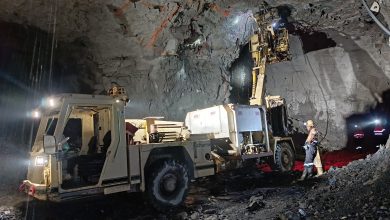
Temporary structures can play a strategic role to ensure business continuity during annual shutdowns
By Coenie Klopper, Branch Manager and Sarah Breedt, National Rentals and Sales Director at Waco Modular
Annual shutdowns are critical periods for industries such as manufacturing, mining and construction. These events demand meticulous planning to balance operational downtime with essential services, ensuring compliance with regulations, performing maintenance tasks and addressing workforce requirements. However, they often present significant challenges that can disrupt operations and affect productivity.
Among these challenges is the increased workforce required during shutdowns, stemming from a greater number of contractors and subcontractors needed on-site, often exceeding the capacity of the existing permanent structures.
Consequently, additional accommodation is required to support the increased personnel. Along with additional accommodation, there is often a need for extra offices, ablutions, canteens, changing rooms and storage space. These facilities must then be furnished with essential items such as tables, chairs, lockers, steel shelving, benches, fridges, and microwaves, among others, to support the workforce adequately.
Temporary modular structures have become a practical and versatile solution to support on-site management offices, staff accommodations, safety briefings, storage and workshops during annual shutdowns. By adopting these innovative solutions, businesses can minimise disruptions, maintain productivity and enhance long-term operational resilience.
Safety and compliance
Modular buildings not only ensure worker comfort and facilitate productivity but also address the challenge of ensuring safety and compliance, along with timely and complete delivery. Because shutdowns are highly time-sensitive and must be completed within the planned duration or sooner to resume normal operations promptly, modular buildings are delivered and erected on schedule, fully complying with safety standards, to allow the annual shutdown to commence as planned.
Essentially, modular buildings offer a versatile, flexible and scalable solution that allows companies to improve operational efficiency during shutdowns. These structures can be easily and safely erected and quickly removed once the project is completed, allowing operations to continue seamlessly.
While the timeline for delivery and erection of modular buildings depends on the customer’s needs and requirements, standard modular buildings can typically be delivered and erected within 24 to 48 hours. Often, shutdowns require urgent responses, with orders placed today needing delivery by tomorrow, thus understanding the customer’s urgency is crucial.
Faster and more efficient
For bespoke modular buildings, the timeline varies based on the complexity of the building and site requirements, making it difficult to provide a set timeline. However, compared to traditional construction methods, modular buildings are generally faster and more efficient. They can be quickly sited, require fewer permits and are therefore ideal for time-sensitive projects like annual shutdowns.
Additionally, these buildings are cost-efficient, avoiding the capital expenditure needed for permanent structures. They provide essential services during the rental period, offering a flexible and economical solution.
Modular buildings have been provided across various industries and projects, particularly during planned shutdowns, to ensure minimal disruption and maintain operational efficiency. Specifically, during maintenance shutdowns, temporary modular buildings have been utilised to provide additional office space, ablution facilities, storage and other work areas.
Maintaining operational efficiency
In mining operations, modular buildings are typically used for accommodation, storage, offices, change houses and ablution facilities, providing comfort and dignity to the workforce. Power stations have also utilised temporary modular buildings during planned maintenance shutdowns, offering workspaces for the various workforces. These modular buildings help maintain operational efficiency and support the workforce during critical shutdown periods.
Modular buildings are designed with components that can be disassembled and reused at the end of the contract period. The shorter manufacturing time reduces environmental impacts like noise, dust and vehicle emissions. Modular buildings require less site preparation and excavation, preserving natural landscapes and reducing soil erosion. Once removed, the site can be easily restored, unlike traditional construction, which is more disruptive and harder to reverse.
Ultimately, modular structures are built to meet stringent safety and regulatory standards and ensure a secure environment for workers. They provide comfortable and dignified spaces, supporting staff morale and improving productivity. These benefits make temporary modular structures an ideal choice for efficiently and effectively managing shutdowns.






